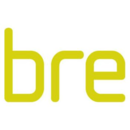Blockchain definitions
‘Blockchain – feasibility and opportunity assessment’, was published by the BRE Trust February 2018. It explores opportunities to address challenges in the built environment industry using blockchain technology.
The report includes the following Blockchain definitions:
Block – the key difference between a DLT (distributed ledger technology) and a blockchain is the block. These chronological blocks contain information regarding transactions as well as a timestamp, the previous blocks hash, and information about the algorithm required to mine the block.
Blockchain – a form of distributed ledger technology that consolidates numerous transactions, as identified by their cryptographic number, in a block, that is then added to the chronological chain of blocks via a hash on the distributed ledger through the mining process.
Distributed Ledger – a chronological, transparent, digital record of transactions and information that, instead of being held in a centralised database, is distributed across a diverse network of nodes.
Hash – a hash is the output of a one-way hash function that packages inputs into an output of a specific size and format. This process ensures information is translated into a manageable size that also prevents the input information from being seen; further establishing the trustless element of DLTs and blockchains.
Mining – this is the term given to the computational effort required to solve an algorithm, creating the next block to be added to the chain.
Node – the distributed system is made up of nodes that each independently validate transactions on the blockchain.
Private Blockchain/DLT – permissions are controlled by a trusted organisation. This organisation can control whether users can or cannot have various levels of access to the information, who can add to it and what transactions are permitted. This allows for a far quicker system that is reliant on trust.
Private Consortium Blockchain/DLT – a type of private blockchain that allows a number of predetermined nodes to participate in the verification and transaction process. This is a hybrid between private and public blockchain, creating a partially decentralised blockchain.
Proof of work – the proof of work concept both deters cyberattack and creates value. This is achieved through the need for nodes to define an expensive computational problem; a process called mining. This process requires computational power, which translates into energy. In rewarding the node/miner that computes this the fastest, value is created.
Proof of stake – in contrast to proof of work the creator of new blocks is not determined through mining, rather the creator is determined based on ‘wealth’, or stake. There is no reward (as all coins/tokens are created from the outset), and a computational problem is still required to be solved, however transaction fees are required, providing incentive.
Public Blockchain/DLT – a decentralised blockchain that can be added to and read by anyone. Permissions are shared equally by all users of the network, creating a completely trustless system.
Tokens – the representation of the tradable ‘goods’ being used within that blockchain. This includes, but is not exclusive to, currency, information, points, certificates etc. Also see Non-fungible token NFT.
Trustless – in removing the requirement for a ‘trusted’ third party (a single centralised control that oversees transactions between peers), blockchains are able to create a decentralised system that does not require trust. Instead, self-executing peer-to-peer transactions are carried out that are recorded and verified by the whole system, therefore removing the need for one trusted body
[edit] Related articles on Designing Buildings Wiki
- BRE articles on Designing Buildings Wiki.
- Blockchain – feasibility and opportunity assessment.
- Blockchain could transform the construction industry.
- Blockchain technology in the construction industry.
- Blockchains will change construction.
- Construction innovation.
- Eliminating waste at scale – opportunities for blockchain.
- Is disruptive innovation possible in the construction industry?
- Non-fungible token NFT.
- Student projects released as non-fungible tokens.
- Unprecedented innovation and new technologies on the horizon.
Featured articles and news
RTPI leader to become new CIOB Chief Executive Officer
Dr Victoria Hills MRTPI, FICE to take over after Caroline Gumble’s departure.
Social and affordable housing, a long term plan for delivery
The “Delivering a Decade of Renewal for Social and Affordable Housing” strategy sets out future path.
A change to adoptive architecture
Effects of global weather warming on architectural detailing, material choice and human interaction.
The proposed publicly owned and backed subsidiary of Homes England, to facilitate new homes.
How big is the problem and what can we do to mitigate the effects?
Overheating guidance and tools for building designers
A number of cool guides to help with the heat.
The UK's Modern Industrial Strategy: A 10 year plan
Previous consultation criticism, current key elements and general support with some persisting reservations.
Building Safety Regulator reforms
New roles, new staff and a new fast track service pave the way for a single construction regulator.
Architectural Technologist CPDs and Communications
CIAT CPD… and how you can do it!
Cooling centres and cool spaces
Managing extreme heat in cities by directing the public to places for heat stress relief and water sources.
Winter gardens: A brief history and warm variations
Extending the season with glass in different forms and terms.
Restoring Great Yarmouth's Winter Gardens
Transforming one of the least sustainable constructions imaginable.
Construction Skills Mission Board launch sector drive
Newly formed government and industry collaboration set strategy for recruiting an additional 100,000 construction workers a year.
New Architects Code comes into effect in September 2025
ARB Architects Code of Conduct and Practice available with ongoing consultation regarding guidance.
Welsh Skills Body (Medr) launches ambitious plan
The new skills body brings together funding and regulation of tertiary education and research for the devolved nation.
Paul Gandy FCIOB announced as next CIOB President
Former Tilbury Douglas CEO takes helm.
UK Infrastructure: A 10 Year Strategy. In brief with reactions
With the National Infrastructure and Service Transformation Authority (NISTA).























